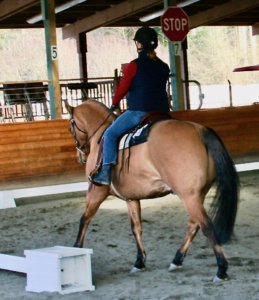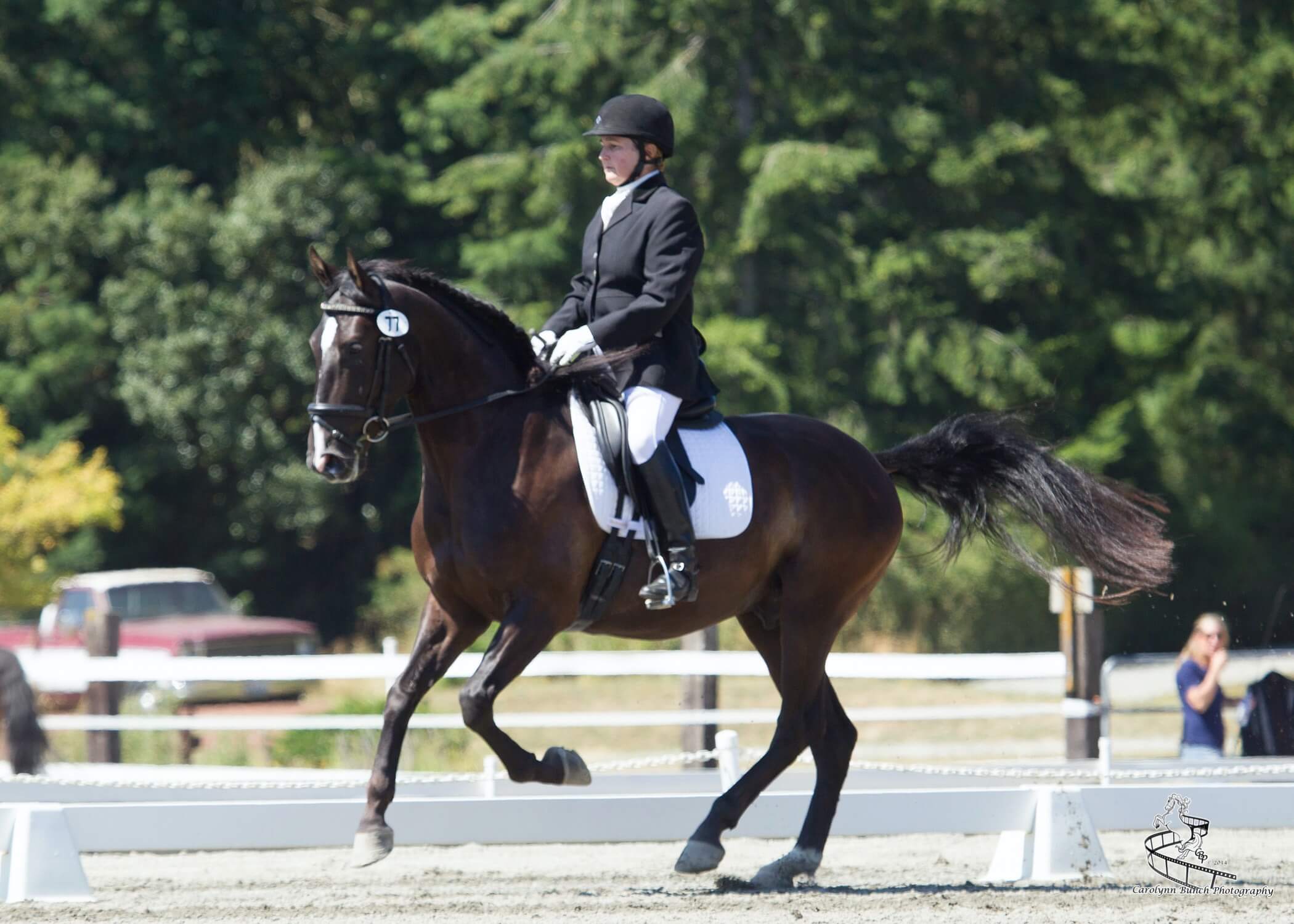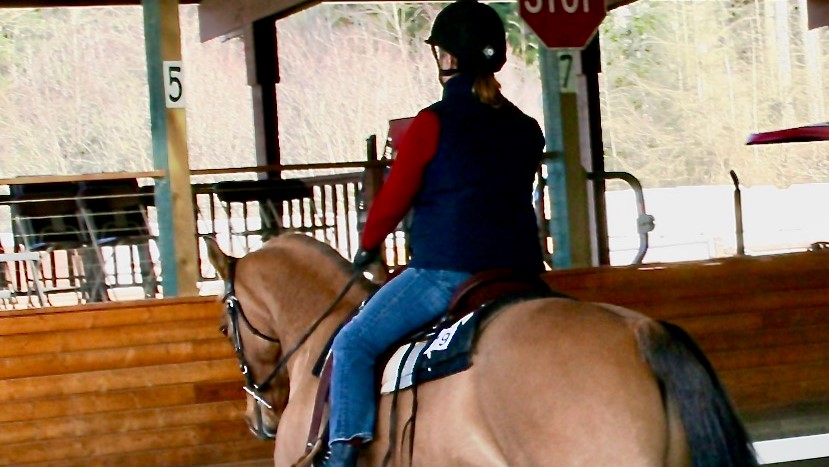Training is directing your horse toward something he doesn’t know. – Anna Blake
When I was in my late teens, I worked with an older horse trainer I respected a great deal. He didn’t talk a lot, but one of the things he told me was this: “Train a horse like you’re in your 80s and can barely walk. Move slowly, take your time, and take lots of breaks.”
He said it to me more than once, because I was a know-it-all teenager. And I heard him, but I didn’t really listen. Back then, my imagination wasn’t well-developed enough to really grasp what he meant. Now, after all these years, I’m finally (finally) starting to understand.

Today when I rode my gelding Gunner, he spooked at a row of cavalletti poles and refused to cross them. He’d already walked over those poles a half-dozen times on this particular ride and he’s crossed them thousands of times since I’ve owned him. But I’ve learned this is just something he does. He probably has some vision issues and the sun was setting, changing the light in the arena; or he could be having some physical issues. Back pain? Muscle pain? Foot pain?
I’d been riding for a while and was ponying another horse off him; he was getting tired. I stopped, took a deep breath, and relaxed my muscles, mirroring with my own body what I wanted him to do with his: Let go, Gunner, it’s okay. Within a few seconds he dropped his head and walked over the poles.
In another time, when I was younger and less experienced, I would have kicked him or perhaps even applied a bit of spur, and things undoubtedly would’ve escalated.
I’m better at training horses now than I’ve ever been. I used to rely more on athleticism to get the job done, but I’m not the athlete I once was. I think more often about that old trainer of mine, and his words of wisdom. I know I listen better to the advice of other trainers now, especially those who have different goals or come from different disciplines than I do.
I love solving training issues and helping my horse calmly figure something out. I’m more patient and know how to wait for the horse. Giving the horse more time and giving up on my own “wants” is part of maturing as a horse trainer.
Anna Blake, our current Trainer’s Corner columnist writes eloquently about these kinds of training issues. I urge you to read her articles. Enjoy our Training and Facilities issue! [email protected]
Published in the August 2020 Issue:

Kim Roe grew up riding on the family ranch and competed in Western rail classes, trail horse, reining, working cow, and hunter/jumper. She trained her first horse for money at 12 years old, starting a pony for a neighbor.
Kim has been a professional dressage instructor in Washington state for over 30 years, training hundreds of horses and students through the levels. In recent years Kim has become involved in Working Equitation and is a small ‘r’ Working Equitation judge with WE United.
Kim is the editor of the Northwest Horse Source Magazine, and also a writer, photographer, and poet. She owns and manages Blue Gate Farm in Deming, Washington where she continues to be passionate about helping horses and riders in many disciplines.






